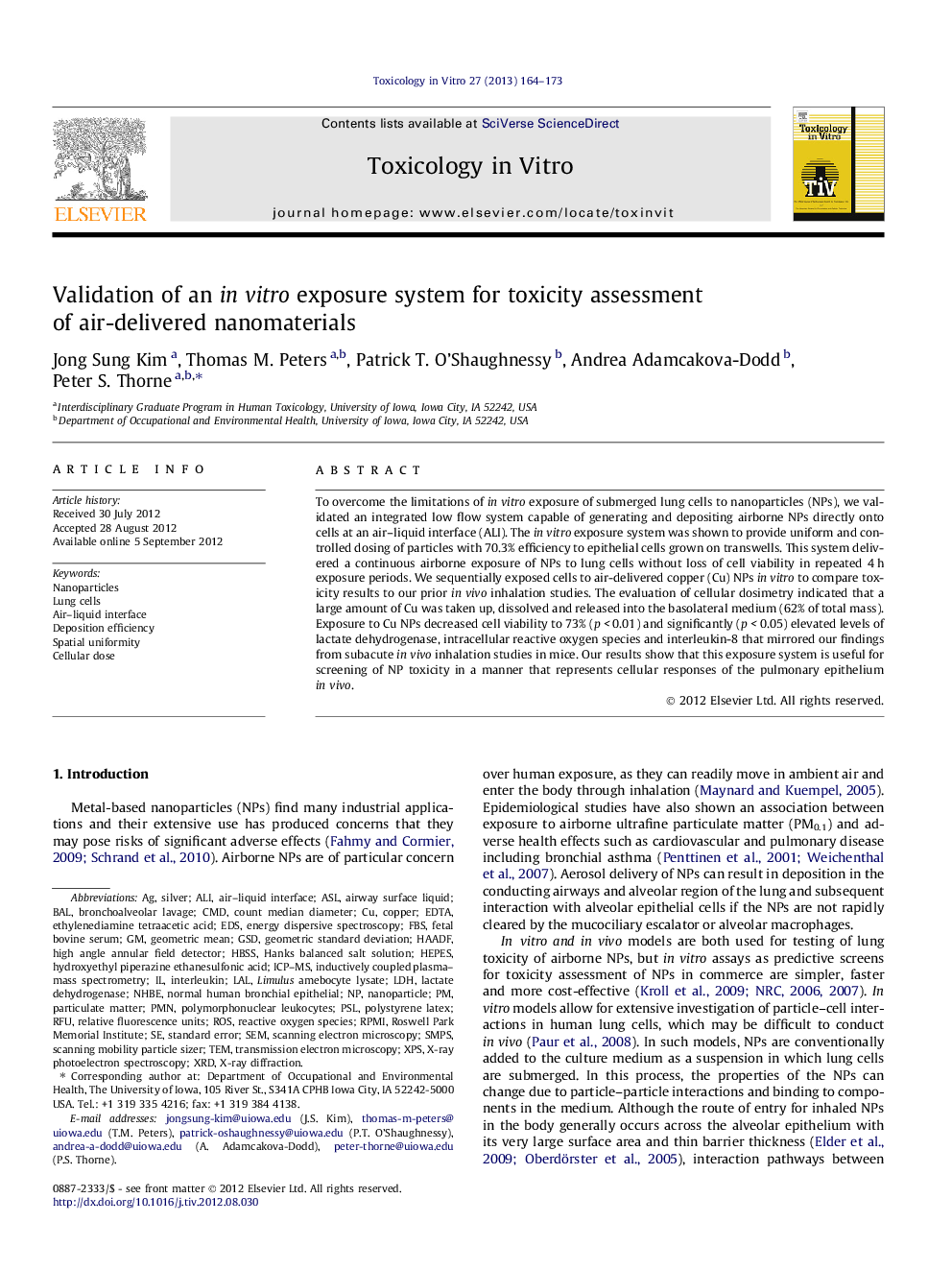| Article ID | Journal | Published Year | Pages | File Type |
|---|---|---|---|---|
| 5862872 | Toxicology in Vitro | 2013 | 10 Pages |
Abstract
⺠A nanoparticle generation and in vitro exposure system was validated. ⺠Lung epithelial cells withstood repeated 4 h exposures without losing viability. ⺠Airborne nanoparticles were delivered to cells with deposition efficiency of 70.3%. ⺠Dissolution delivered 62% of the Cu mass to the basolateral medium after 8 h. ⺠Cu nanoparticles induced similar toxicity to that seen in mouse inhalation studies.
Keywords
GSDcount median diameterRFULimulus Amebocyte LysateNHBEPSLLALPMNBALHBSSRPMIHAADFHEPESCMDASLSMPSFBSEDSHanks balanced salt solutionICP–MSROSEDTAethylenediamine tetraacetic acidAligeometric standard deviationnormal human bronchial epithelialTeminterleukinstandard errorScanning mobility particle sizerparticulate matterair–liquid interfaceDeposition efficiencyfetal bovine serumLung cellsinductively coupled plasma–mass spectrometryX-ray photoelectron spectroscopyenergy dispersive spectroscopyXPSPolystyrene latexbronchoalveolar lavagelactate dehydrogenaseLDHpolymorphonuclear leukocytesRoswell Park Memorial Instituteairway surface liquidSEMCopperGeometric meanScanning electron microscopyTransmission electron microscopyNanoparticleNanoparticlesSilverRelative Fluorescence UnitsXRDX-ray diffractionReactive oxygen speciesSpatial uniformity
Related Topics
Life Sciences
Environmental Science
Health, Toxicology and Mutagenesis
Authors
Jong Sung Kim, Thomas M. Peters, Patrick T. O'Shaughnessy, Andrea Adamcakova-Dodd, Peter S. Thorne,
